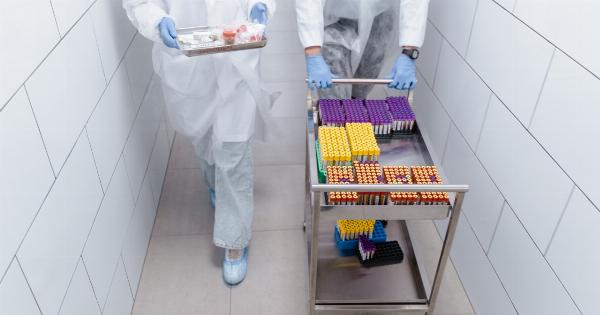Our immune system is a complex network of cells, tissues, and organs that work together to protect our body against foreign invaders such as viruses, bacteria, and parasites. One of the key players in this system is the white blood cells or leukocytes.
Types of White Blood Cells
There are five different types of white blood cells, each with a specific role in fighting off pathogens:.
- Neutrophils – these are the most abundant type of white blood cells and are the first responders to an infection. They engulf and destroy the invading pathogens.
- Lymphocytes – these are the second most abundant type of white blood cells and are responsible for recognizing and destroying specific pathogens. There are two main types of lymphocytes – B cells and T cells.
- Monocytes – these are large white blood cells that can differentiate into macrophages, which engulf and digest pathogens, and dendritic cells, which present the antigens of the pathogens to the lymphocytes for recognition.
- Eosinophils – these are white blood cells that are specialized in fighting off parasites and other organisms. They release toxins that kill the parasites.
- Basophils – these are the rarest type of white blood cells and are involved in allergic reactions.
Visualizing White blood cells
Until recently, it was difficult to visualize the white blood cells in action against pathogens due to their small size and the fact that they are located inside the body.
However, new imaging technologies have made it possible to observe the immune response in real-time.
Fluorescent Microscopy
Fluorescent microscopy is a technique that uses fluorescent dyes or proteins to label the cells of interest.
These dyes or proteins emit a bright fluorescent signal when illuminated with a specific wavelength of light, allowing researchers to visualize the cells under a microscope.
For example, researchers can label the neutrophils with a green fluorescent protein and infect the cells with a bacteria that is labeled with a red fluorescent protein.
They can then observe the neutrophils engulfing and destroying the bacteria under a microscope.
Multiphoton Microscopy
Multiphoton microscopy is a more advanced version of conventional microscopy that uses two or more photons of light to excite the fluorophores. This reduces the damage to the tissues and allows for deeper penetration into the sample.
Using this technique, researchers have been able to visualize the interactions between the lymphocytes and the antigens presented by the dendritic cells.
They have also been able to observe the formation of the immunological synapse, which is the point of contact between the immune cell and the antigen-presenting cell.
Time-Lapse Microscopy
Time-lapse microscopy is a technique that records the images of the immune cells over time, allowing researchers to observe the dynamics of the immune response.
This technique is particularly useful for studying the behavior of the immune cells in vivo, that is, in a living organism.
For example, researchers can infect a mouse with a fluorescent bacteria and film the neutrophils and macrophages as they migrate towards the site of infection and engulf the bacteria.
3D Imaging
3D imaging is a technique that creates a three-dimensional representation of the immune cells and the tissue surrounding them. This technique is particularly useful for studying the interactions between the immune cells and the environment.
Using this technique, researchers have been able to visualize the structure of the lymph nodes and the way the lymphocytes move within them. They have also been able to observe the way the macrophages interact with the other cells in the tissue.
Conclusion
The ability to visualize the white blood cells in action against pathogens has provided new insights into the workings of our immune system.
This knowledge can be used to develop new therapies and vaccines that can boost our immune response and protect us against a wide range of infections.































